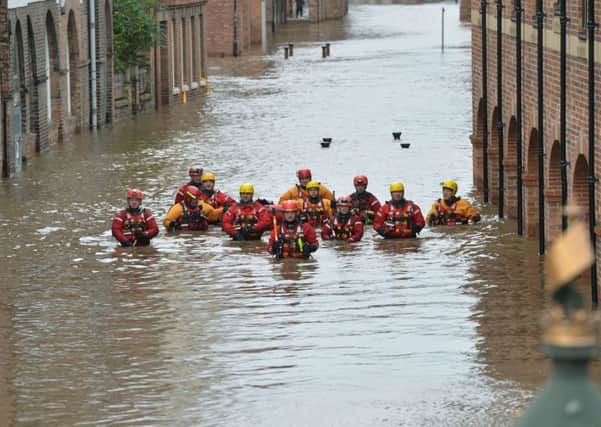Lasers to map all of England to tackle flooding


Under plans unveiled by the government agency, aircraft equipped with laser scanners will map all 130,000 square kilometres (50,000 square miles) of the country in 3D, including rivers, fields and national parks, by 2020.
The data gathered will be used to understand flooding risk and plan flood defences, and will also be made available free of charge for the public and industry including archaeologists, urban planners and even computer gamers.
Advertisement
Hide AdAdvertisement
Hide AdAround 75 per cent of the country is already mapped, but there is only sporadic coverage of upland areas and the new project, beginning over winter, will fill in the gaps.
The new data will be better quality than ever before, the Environment Agency said, with the whole country mapped at a one metre resolution using the most up-to-date laser technology to reveal the terrain more clearly.
The “lidar” – light detection and ranging – technology, which measures the distance between the aeroplane and the ground to build up a picture of the terrain, can be used to detect sudden landscape changes which could indicate illegal tips.
In 2014, eight people in Cornwall were fined for dumping thousands of tonnes of waste which was discovered using lidar data, the agency said. Other government agencies can use it to help improve the environment.
Advertisement
Hide AdAdvertisement
Hide AdFor example, Natural England assesses wildlife habitats while the Forestry Commission can learn more about the extent of tree cover.
And it can reveal hidden secrets of the country’s past, with archaeologists using it to uncover lost Roman roads in northern England. Environment Agency chief executive Sir James Bevan said: “This ambitious project will enhance our understanding of England’s unique natural features and landscape, helping us to better understand flood risk, plan effective defences and fight waste crime.
“I’m pleased we are able to gather, use and share such valuable data to contribute to environmental improvements and conservation. It’s just one of the many ways the Environment Agency is using technology to help people and wildlife.”
Yorkshire was hit hard by the Boxing Day floods of two years ago, with thousands of homes destroyed and businesses threatened as rivers burst their banks in the wake of Storm Eva.
Advertisement
Hide AdAdvertisement
Hide AdMajor work has been under way in the region in recent months, the Environment Agency has said, outlining a six-year programme to better protect 66,000 homes.
The Yorkshire Post reported on Boxing Day that flooding victims in the county were still seeking support as the emotional scars remained two years on from the devastating deluge that swept across much of the north of England.
Thousands of homes and businesses were badly damaged in the wake of Storm Desmond in 2015 as heavy rain fell on already saturated ground over the festive period.
The immediate aftermath saw communities spring into action to support those affected, with millions of pounds since given in grants to ease the burden.
However, on the two-year anniversary of the devastation, it emerged that families were still coming forward to seek financial support as the impact continues to take its toll.